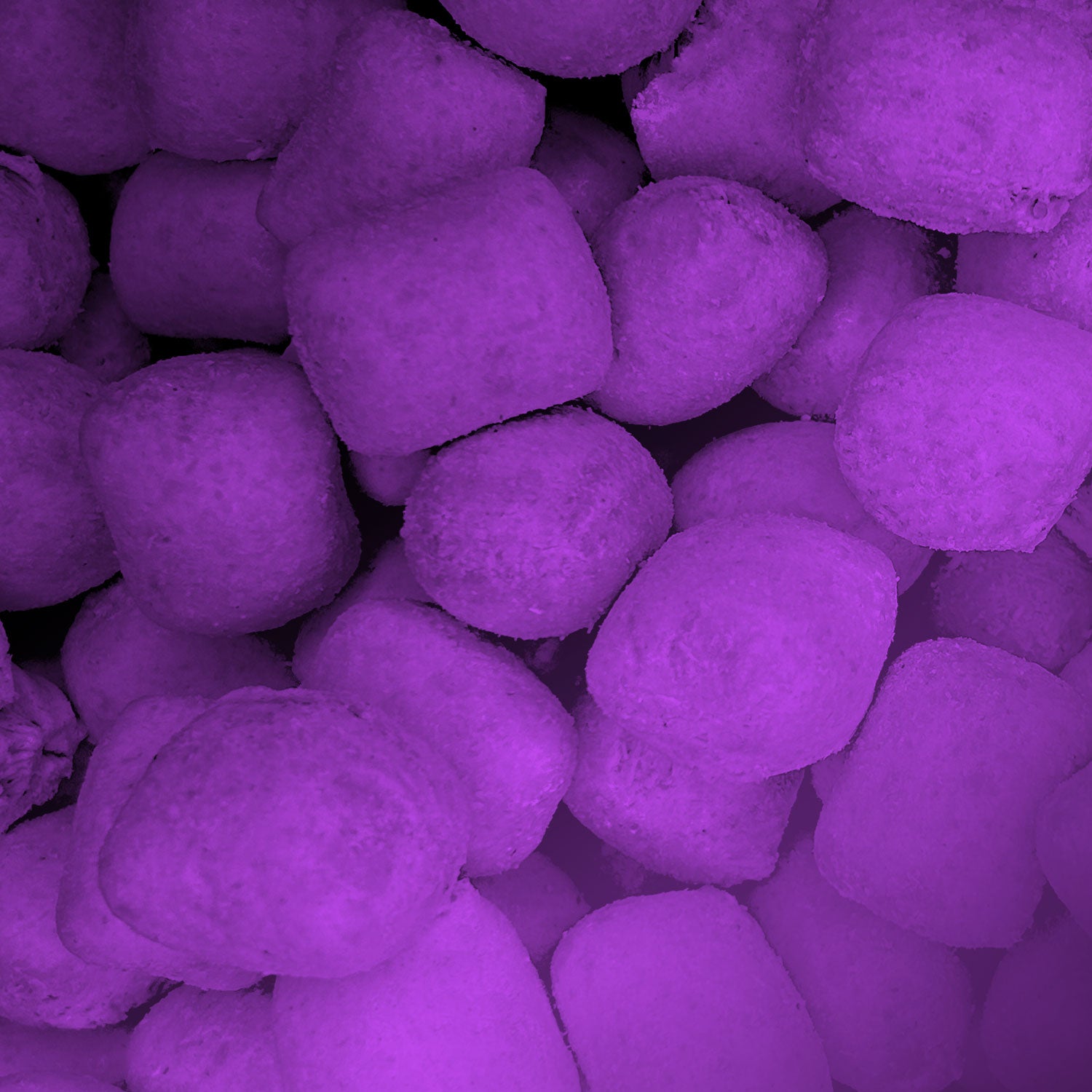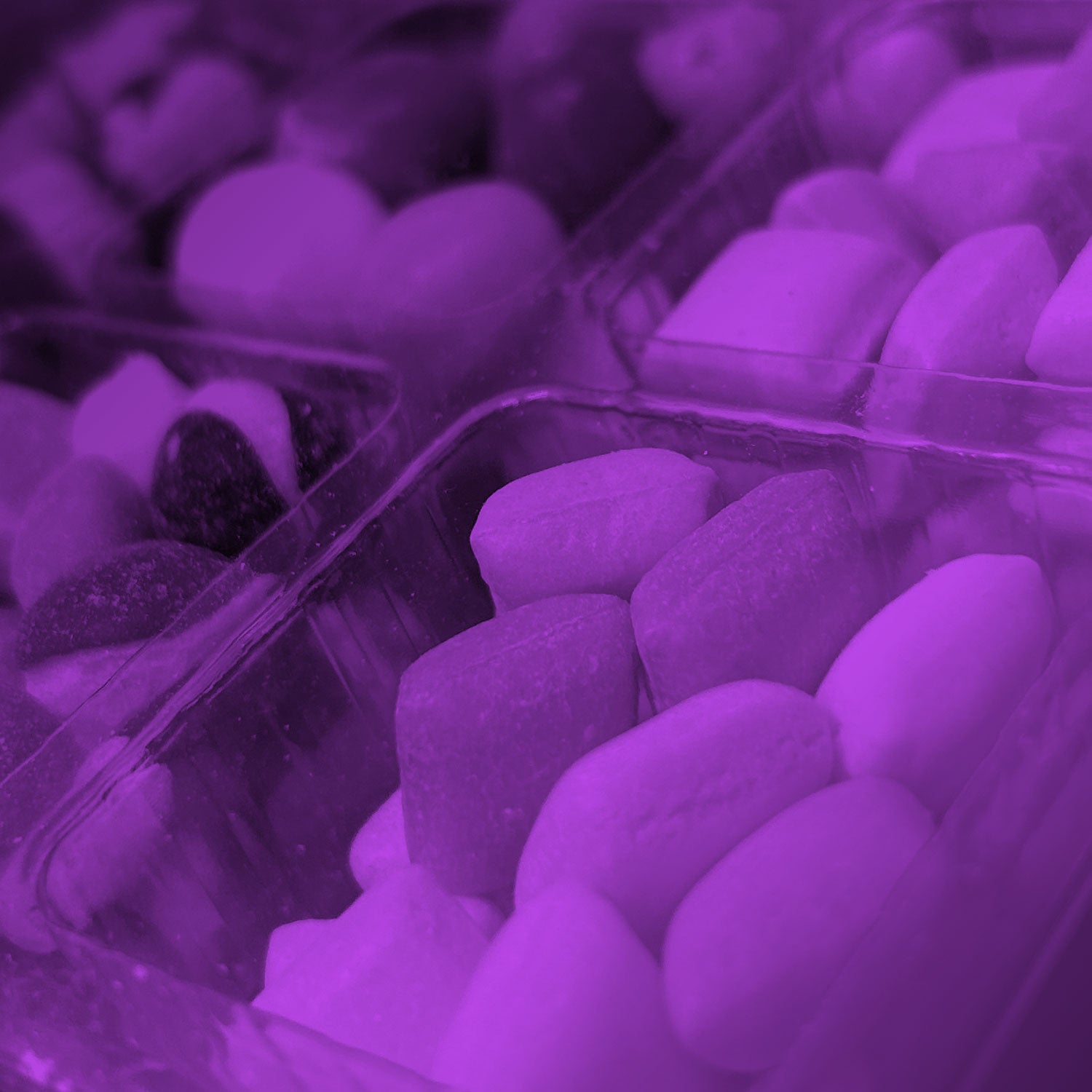Introduction:
Behind every crunchy, puffed-up piece of freeze-dried candy, there’s a world of math at play! From energy calculations to expansion ratios, mathematics is essential in optimizing the freeze-drying process. In this post, we’ll explore the numbers behind creating the perfect freeze-dried treat.
The Energy Behind Freeze-Drying
Freeze-drying requires significant energy to remove moisture while keeping the candy’s structure intact. One of the key calculations is the energy needed for sublimation:
- Latent Heat of Sublimation: Water requires 2264.705 kJ/kg to transition directly from ice to vapor.
- Example Calculation: If we freeze-dry 10 kg of candy, the energy required is:
Q=2264.705×10=22,647.05kJQ = 2264.705 \times 10 = 22,647.05 \text{kJ}
That’s the equivalent of keeping a 100-watt lightbulb on for nearly 63 hours!
Expansion Ratios: Why Candies Puff Up
Some candies expand dramatically when freeze-dried. This is due to water expansion and sublimation. Expansion can be measured using the volume ratio formula:
- Volume Ratio = Final Volume / Initial Volume
- Example: A Skittle that starts at 1 cm³ and expands to 2.5 cm³ has an expansion ratio of:
2.5/1=2.52.5 / 1 = 2.5
That means the candy is now 2.5 times larger than its original size!
The Importance of Pressure & Temperature
Freeze-drying works by lowering pressure and temperature to the right conditions. Key figures include:
- Triple Point of Water: 0.01°C at 611 Pascals (necessary for sublimation)
- Standard Freeze-Drying Temperature: -40°F to -50°F
- Vacuum Pressure Range: 100–500 mTorr (to prevent reabsorption of moisture)
Proper calculations ensure that the candy dries efficiently without collapsing or burning.
Shelf-Life and Moisture Content Math
Freeze-dried products can last years due to extremely low moisture content. Here’s how moisture removal is calculated:
- Moisture Percentage Formula:
Moisture Removed=Initial Weight−Final WeightInitial Weight×100\text{Moisture Removed} = \frac{\text{Initial Weight} - \text{Final Weight}}{\text{Initial Weight}} \times 100
- Example: A 10g piece of candy that ends up as 1g after freeze-drying:
10−110×100=90% water removed\frac{10 - 1}{10} \times 100 = 90\% \text{ water removed}
Most freeze-dried foods remove 99% of moisture, ensuring long shelf life and crunchiness.
Fun Math Fact!
Freeze-drying removes 99% of water, but that means candy weighs only 1% of its original weight after processing—making it ultra-light and perfect for space travel!
Conclusion:
From energy calculations to expansion ratios, math is at the core of freeze-drying. Every crunchy bite of UpTop Treats is backed by precise formulas that create the perfect texture and taste!
Next up in our STEAM series: The Final Recap—bringing together Science, Technology, Engineering, Art, and Math for a full-circle look at freeze-drying!
Title: The Mathematics of Freeze-Drying: Crunching the Numbers
Introduction:
Behind every crunchy, puffed-up piece of freeze-dried candy, there’s a world of math at play! From energy calculations to expansion ratios, mathematics is essential in optimizing the freeze-drying process. In this post, we’ll explore the numbers behind creating the perfect freeze-dried treat.
The Energy Behind Freeze-Drying
Freeze-drying requires significant energy to remove moisture while keeping the candy’s structure intact. One of the key calculations is the energy needed for sublimation:
- Latent Heat of Sublimation: Water requires 2264.705 kJ/kg to transition directly from ice to vapor.
- Example Calculation: If we freeze-dry 10 kg of candy, the energy required is:
Q=2264.705×10=22,647.05kJ
That’s the equivalent of keeping a 100-watt lightbulb on for nearly 63 hours!
Expansion Ratios: Why Candies Puff Up
Some candies expand dramatically when freeze-dried. This is due to water expansion and sublimation. Expansion can be measured using the volume ratio formula:
- Volume Ratio = Final Volume / Initial Volume
- Example: A Skittle that starts at 1 cm³ and expands to 2.5 cm³ has an expansion ratio of:
2.5/1=2.5
That means the candy is now 2.5 times larger than its original size!
The Importance of Pressure & Temperature
Freeze-drying works by lowering pressure and temperature to the right conditions. Key figures include:
- Triple Point of Water: 0.01°C at 611 Pascals (necessary for sublimation)
- Standard Freeze-Drying Temperature: -40°F to -50°F
- Vacuum Pressure Range: 100–500 mTorr (to prevent reabsorption of moisture)
Proper calculations ensure that the candy dries efficiently without collapsing or burning.
Shelf-Life and Moisture Content Math
Freeze-dried products can last years due to extremely low moisture content. Here’s how moisture removal is calculated:
- Moisture Percentage Formula:

- Example: A 10g piece of candy that ends up as 1g after freeze-drying:
![]()
Most freeze-dried foods remove 99% of moisture, ensuring long shelf life and crunchiness.
Fun Math Fact!
Freeze-drying removes 99% of water, but that means candy weighs only 1% of its original weight after processing—making it ultra-light and perfect for space travel!
Conclusion:
From energy calculations to expansion ratios, math is at the core of freeze-drying. Every crunchy bite of UpTop Treats is backed by precise formulas that create the perfect texture and taste!
Next up in our STEAM series: The Final Recap—bringing together Science, Technology, Engineering, Art, and Math for a full-circle look at freeze-drying!






